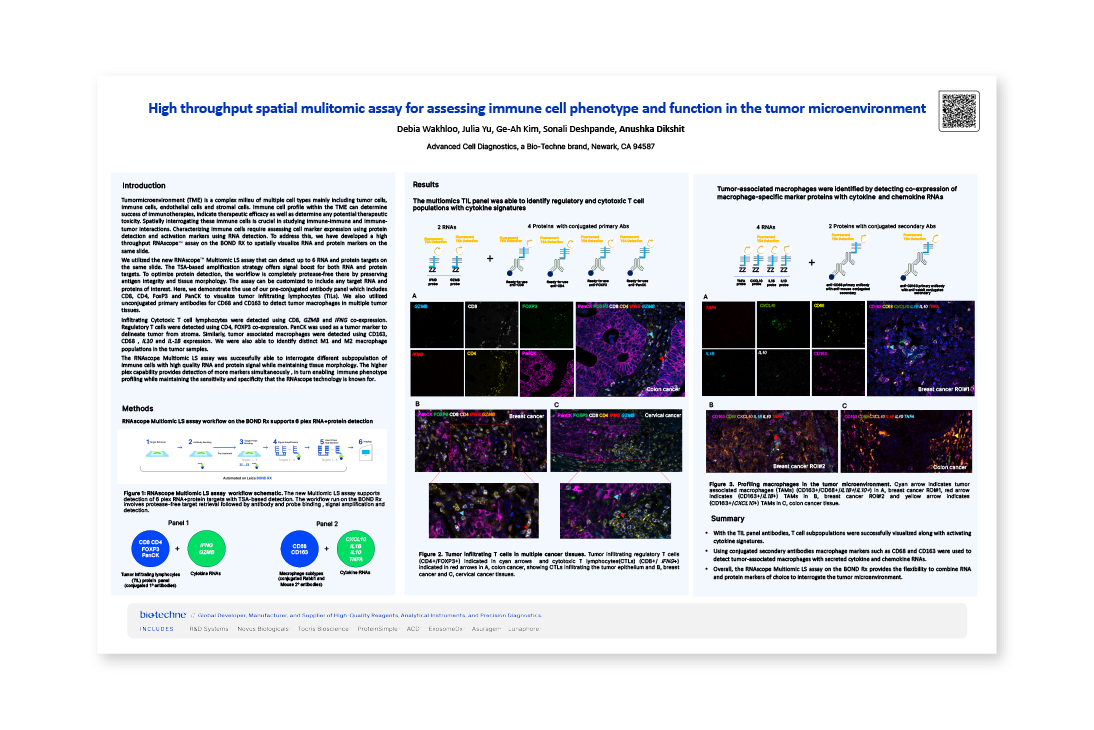High Throughput Spatial Mulitomic Assay for Assessing Immune Cell Phenotype and Function in the Tumor Microenvironment
Scientific Meeting PostersTumor microenvironment (TME) is a complex milieu of multiple cell types mainly including tumor cells, immune cells, endothelial cells and stromal cells. Immune cell profile within the TME can determine success of immunotherapies, indicate therapeutic efficacy as well as determine any potential therapeutic toxicity. Spatially interrogating these immune cells is crucial in studying immune-immune and immune-tumor interactions. Characterizing immune cells require assessing cell marker expression using protein detection and activation markers using RNA detection. To address this, we have developed a high throughput RNAscope assay on the BOND RX to spatially visualize RNA and protein markers on the
same slide.
We utilized the new RNAscope Multiomic LS assay that can detect up to 6 RNA and protein targets on the same slide. The TSA-based amplification strategy offers signal boost for both RNA and protein targets. To optimize protein detection, the workflow is completely protease-free there by preserving antigen integrity and tissue morphology. The assay can be customized to include any target RNA and proteins of interest. Here, we demonstrate the use of our pre-conjugated antibody panel which includes
CD8, CD4, FoxP3 and PanCK to visualize tumor infiltrating lymphocytes (TILs). We also utilized unconjugated primary antibodies for CD68 and CD163 to detect tumor macrophages in multiple tumor tissues.
Infiltrating Cytotoxic T cell lymphocytes were detected using CD8, GZMB and IFNG co-expression. Regulatory T cells were detected using CD4, FOXP3 co-expression. PanCK was used as a tumor marker to delineate tumor from stroma. Similarly, tumor associated macrophages were detected using CD163, CD68 , IL10 and IL-1B expression. We were also able to identify distinct M1 and M2 macrophage populations in the tumor samples.
The RNAscope Multiomic LS assay was successfully able to interrogate different subpopulation of immune cells with high quality RNA and protein signal while maintaining tissue morphology. The higher plex capability provides detection of more markers simultaneously, in turn enabling immune phenotype profiling while maintaining the sensitivity and specificity that the RNAscope technology is known for.
